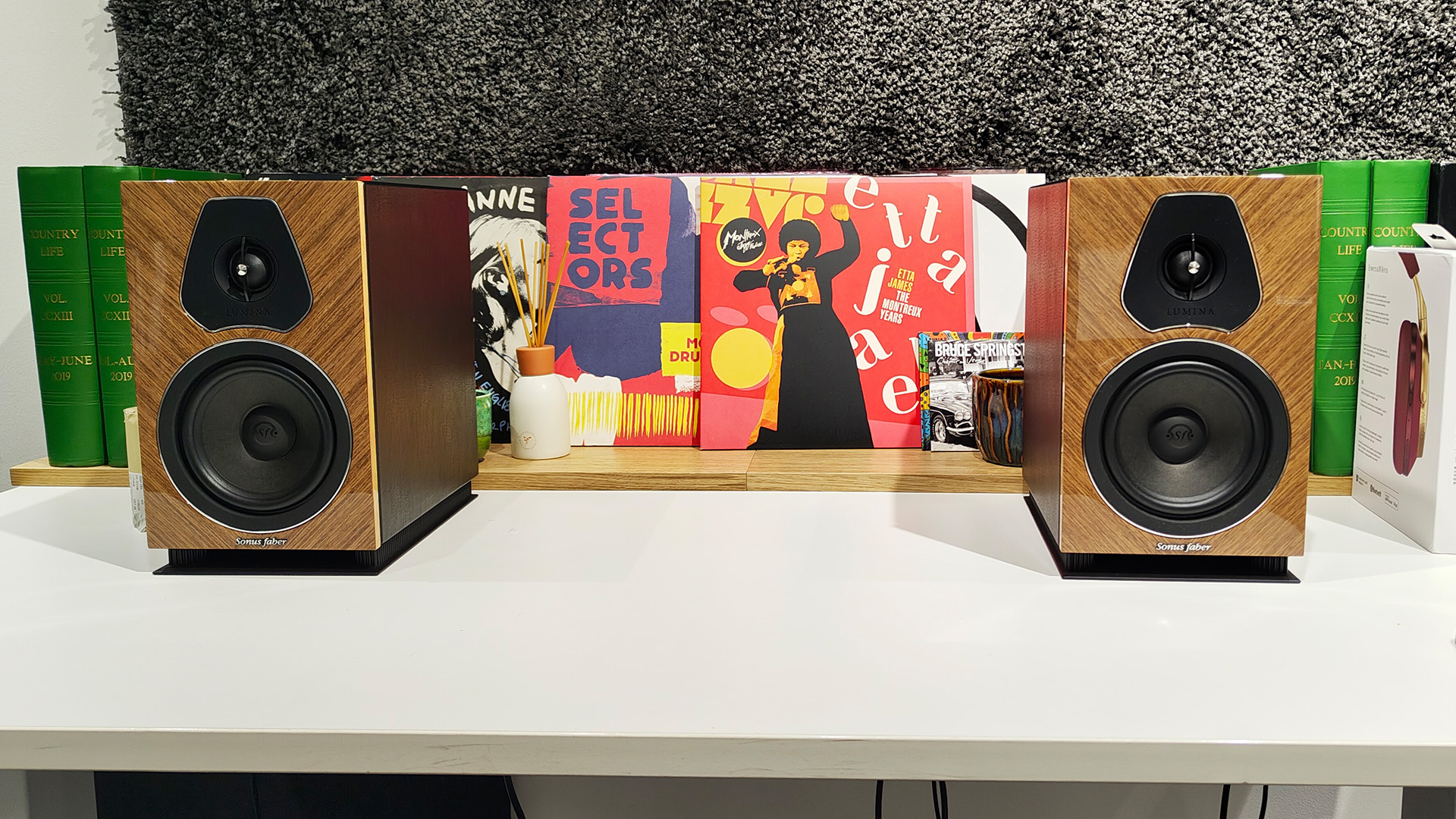
If you’re of a curious disposition, you’ll be interested to discover that the literal translation of “Amator” from Italian to English is “to be loved”, perhaps revealing Sonus Faber’s ambitions to make its customers fall head over heels for its attractive loudspeaker range. The Italian brand’s new Amator standmounters build on the design and DNA of the established Lumina II, albeit with some key technical upgrades in order to improve their overall sonic performance.
The main difference between the standard version of the Lumina II and this new version is the Amators’ improved crossover design. Your extra £300 ($300 / AU$800) over the standard iteration takes the lessons learned from the high-end Sonus Faber Amati and Guarneri G5 speakers in pursuit of improved sonic performance, with such changes including upgraded components and a revised layout. The crossover point is also different from the standard Lumina II – up 800Hz to 2600Hz - while sensitivity increases by 3dB to 89dB for the Amators.
Build & design
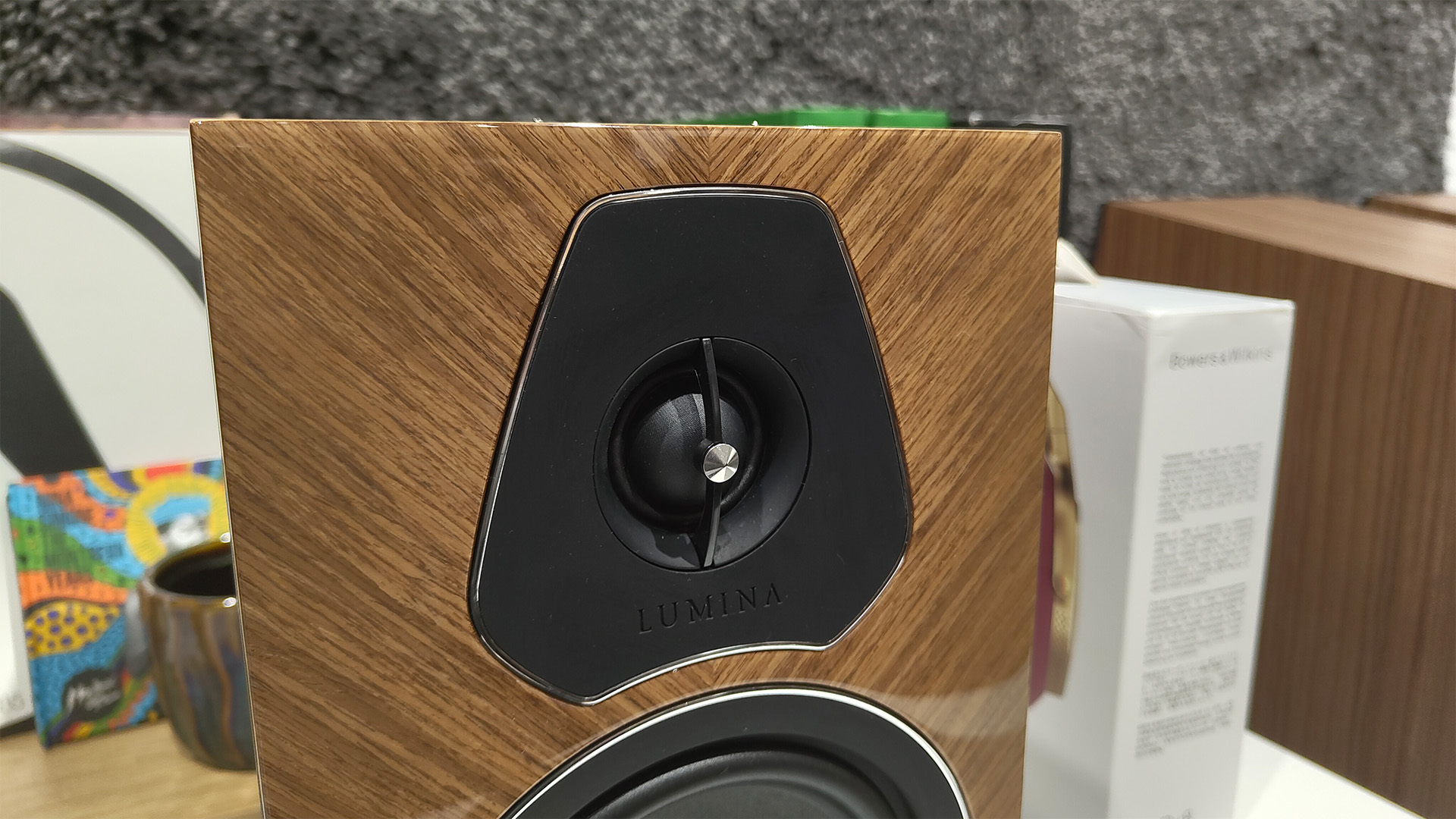
Despite being nowhere near the most wallet-busting pair of speakers within Sonus Faber’s roster, the Lumina II Amator have inherited much of the style that makes the Italian brand’s speakers so easy on the eye. Like the standard Lumina II, the Amator employ a blend of smooth leather exteriors complemented by plywood panels, adorned in handsome walnut or wenge wood veneers. Our dark wenge pair look effortlessly classy, even if we admit that we like the look of the speakers when dressed in a rather sumptuous red gloss finish.
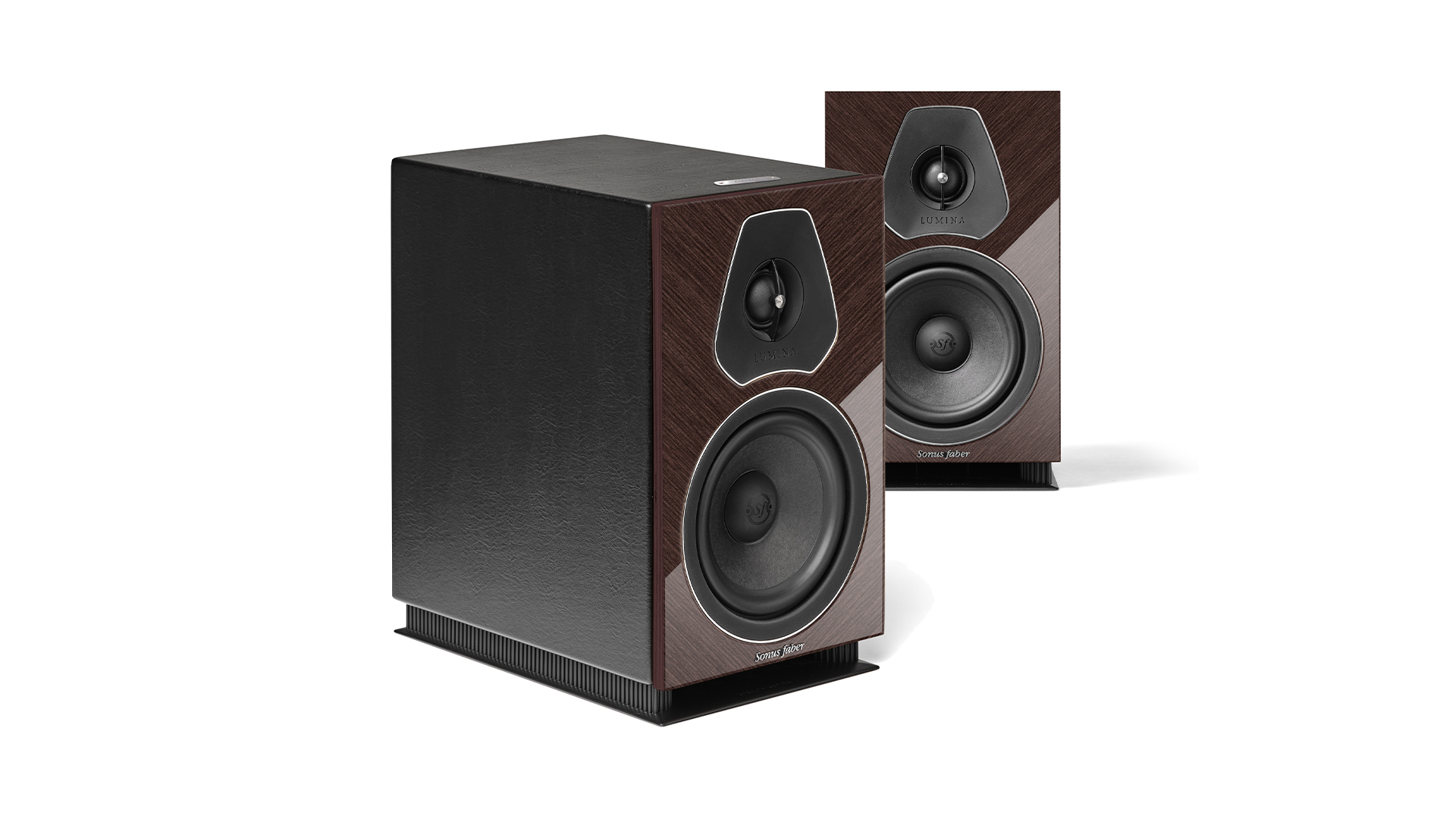
Type Standmount
Drive units 29mm DAD tweeter, 15cm paper cone midrange
Ported? Yes, forward firing
Bi-wire? Yes
Impedance 4 Ohms (nominal)
Sensitivity 86dB
Dimensions (hwd) 30.4 x 18 x 26.3cm
Weight (per unit) 5.8kg
Finishes x3 (glossy red, glossy wenge, glossy walnut)
The Amator aren’t quite perfect, though. The speakers’ built-in base plinths are constructed from a somewhat bland, functional-looking plastic that, while it doesn’t entirely ruin the overall aesthetic, detracts from that luxurious, suave impression, like adding a body kit to a classic Jaguar E-type. We also feel that the terminals could be just a tad more luxurious – they’re hardly offensive, but their bland, slightly cheap feel isn’t quite in keeping with the impression conjured by the rest of the speakers’ build.
Each Lumina II Amator features a 29mm tweeter and a 15cm paper cone mid-woofer, essentially the same drive units you’ll find in the standard version. The tweeter is constructed using Sonus Faber’s patented Damped Apex Dome technology which better controls the diaphragm’s behaviour and thus reduces distortion.
Compatibility
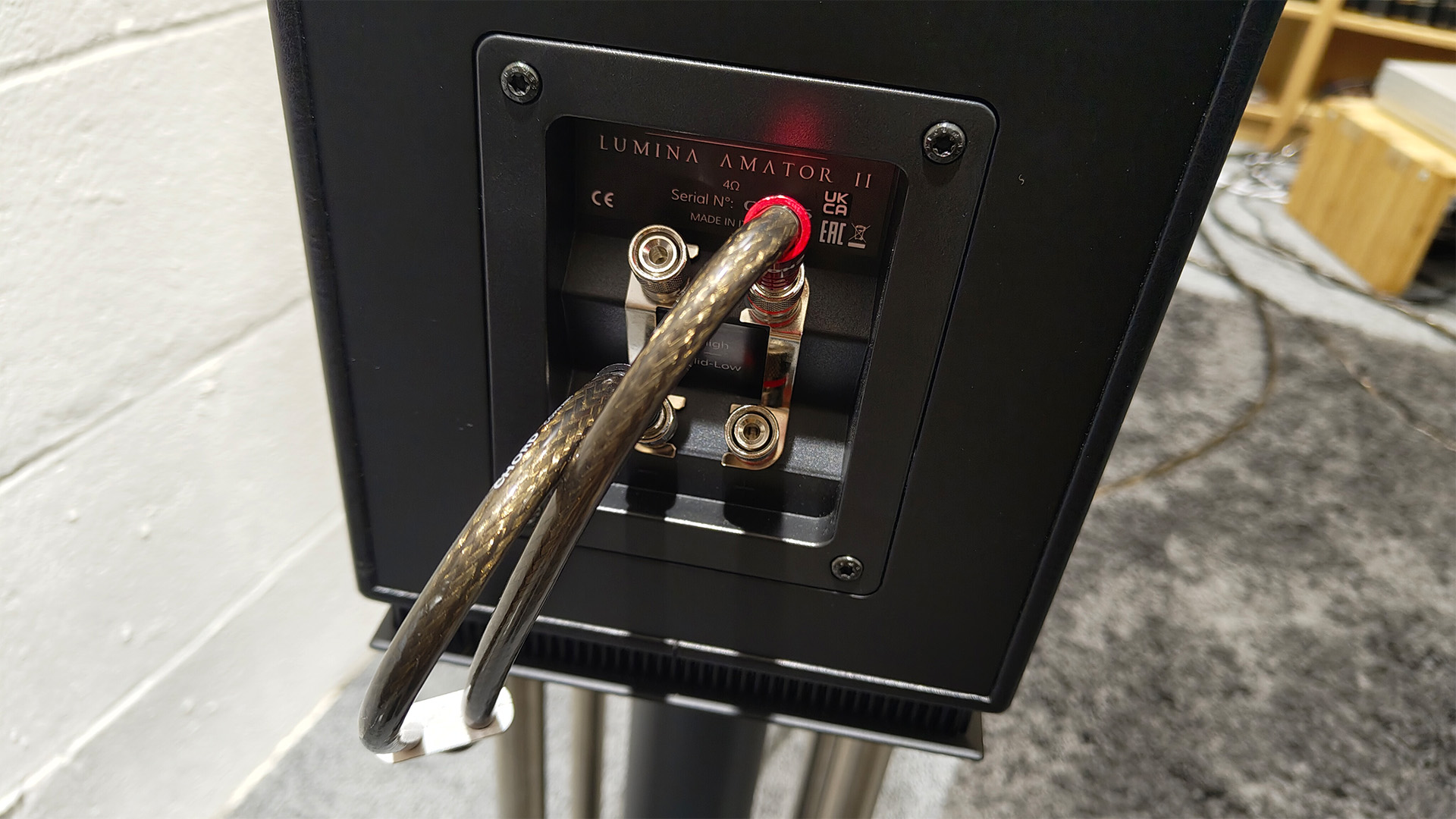
During our testing we use both the Naim Nait XS 3 (tested at £2199 / $2999) and the more affordable Arcam A15 amplifier (tested at £1099 / $990), fed by the Naim Uniti Atom Headphone Edition streamer and the Cyrus CDi CD player as our primary source players.
What we discover is that the Lumina II Amator aren’t too fussy with what you partner them with, and are clearly capable of showing the improvements as we go up in source and amplifier quality. The Amator speakers are capable of producing a reasonably wide, well-formed soundstage, so users with slightly larger rooms should still feel confident that the new standmounts can fill a given space without sounding thin or diffused. A forward-firing port, meanwhile, has the benefit of making the speakers a little less fussy about wall placement and bi-wiring.
For positioning, we angle the Sonus Faber speakers slightly inwards so that their axis crosses behind our heads. Firing the speakers too directly at our listening position makes them sound too hard in the treble, while placing the units too close to the wall threatens to tip a slightly soft bass sound into the dreaded realm of a muddied, amorphous rumble – roughly 40cm away from the back wall is optimal for us, although that might differ depending on your system and the dimensions and construction of your listening room.
Sound
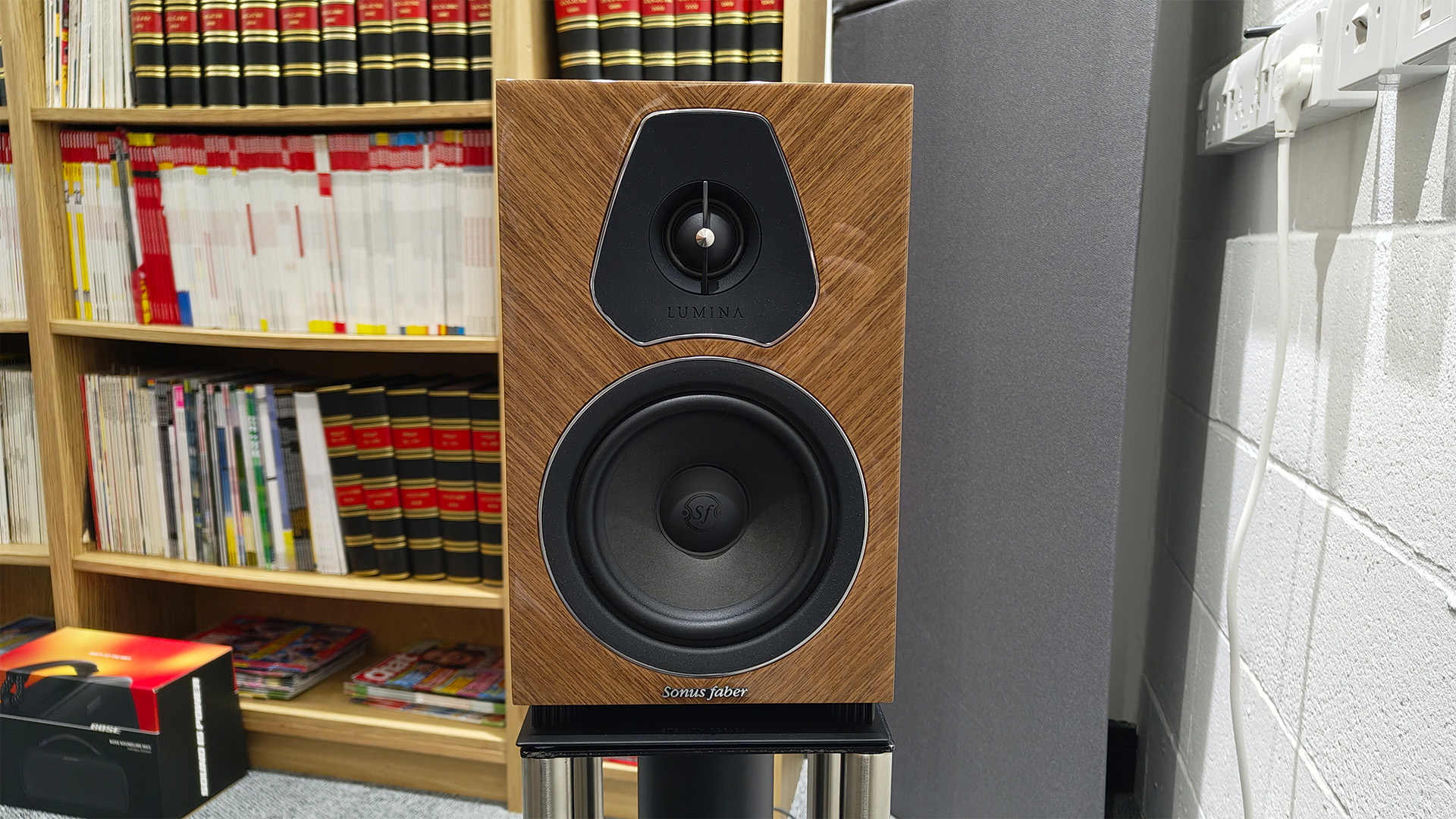
It’s always rather pleasing when a pair of speakers’ superficial aesthetics match the sound they produce. The Lumina II Amator serve as a textbook example, complementing their elegant, classy looks with a sonic style that feels similarly rich and robust while exhibiting enough key strengths for us to report that they’re almost as easy on the ears as they are on the eyes.
For their richness and authority, the Lumina II Amator are undeniably impressive, furnishing tracks with a warmth and solidity that often serves to make them an inviting, pleasurable listen. A class leader such as the PMC Prodigy 1 (tested at 1250 / $1699 / AU$2299) can make Ramin Djawadi’s Across The Oceans Of Time sound more nuanced and detailed, but what the Lumina II Amator bring to the party is a lovely balance between spaciousness and warmth, offering all of the breadth and scale the overall composition requires while providing each voice – be it soaring sopranos or bassier baritones – with authority and weight.
The Amators’ reproduction of vocals is pleasingly expressive, and as we switch to Elliott Smith’s calm, considered performance on Between The Bars, it’s hard to escape just how good these speakers are at giving vocals real depth and tone. Smith’s voice can be a tricky beast, but the Italian standmounts make him sound appropriately intimate and confessional without stripping away any of that vital muscle from the late balladeer’s vocal cords.
Detail levels are highly respectable, too, and that’s a strength that goes beyond the human voice. Matthew Sweet’s Girlfriend is anchored by a full, crunchy guitar riff that the Amator bring out with confidence and force as they furnish the track with all of the weight, muscle and authority required in order to give the performance a proper sense of oomph. Lesser speakers might have made that guitar lick sound thin or scratchy, but through the Amator standmounts, it’s as satisfying as a nice Rioja.
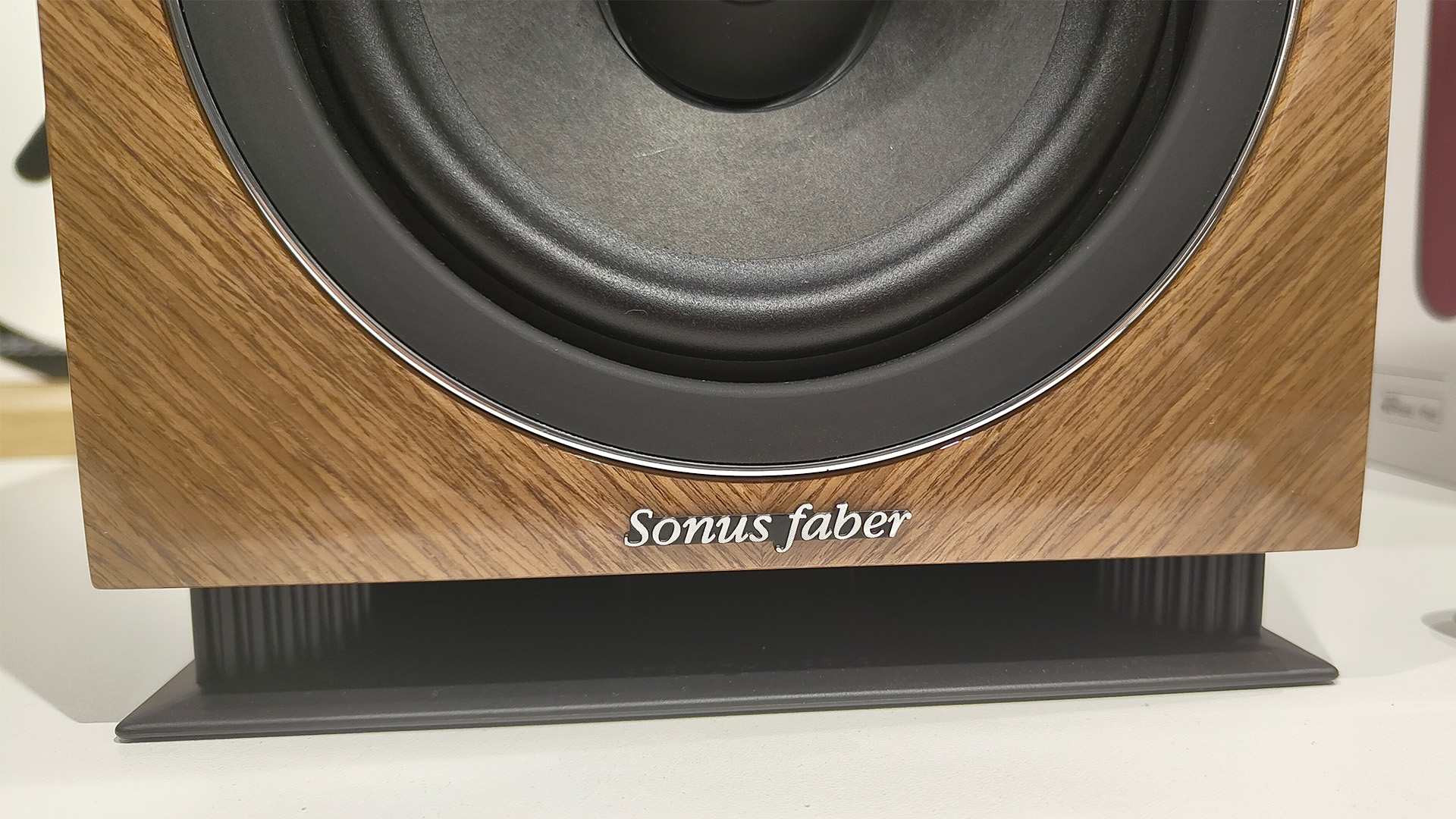
Where the Lumina II Amator make their seemingly inevitable trade-offs, however, are in those kingmaking attributes of dynamism and rhythmic aptitude. Comparing the Sonus Fabers side-by-side with the PMC Prodigy 1 doesn’t reveal a yawning chasm concerning the two pairs’ capabilities, but it certainly highlights how the PMC Award-winners effortlessly pick up on certain patterns with more spark and dynamism. Listening to a percussive passage from alt-J’s The Gospel Of John Hurt, in which various cascading drum strokes flit across the soundstage, the PMC feel more adept in picking up on the nuances in tone and strike force of each instrumental hit. By contrast, the Sonus Fabers’ approach can make the sequence sound just a smidge mechanical, with differences in volume and punch not always coming through with as much insight or contrast.
The Prodigy 1 are also more light-footed and rhythmically propulsive, keeping tracks moving forward with a keener sense of momentum and musical tenacity. Massive Attack’s Teardrop is crisper and sharper through the Prodigy 1, underpinned by the benefit of a taut, well-formed bass. The Sonus Faber don’t quite have the same knack for timing, and while they do a solid job of keeping the lower registers in check, a lack of definition and tautness at the bottom of bass notes slightly prevents the Italian contenders from having that PMC-esque sense of snap.
Verdict
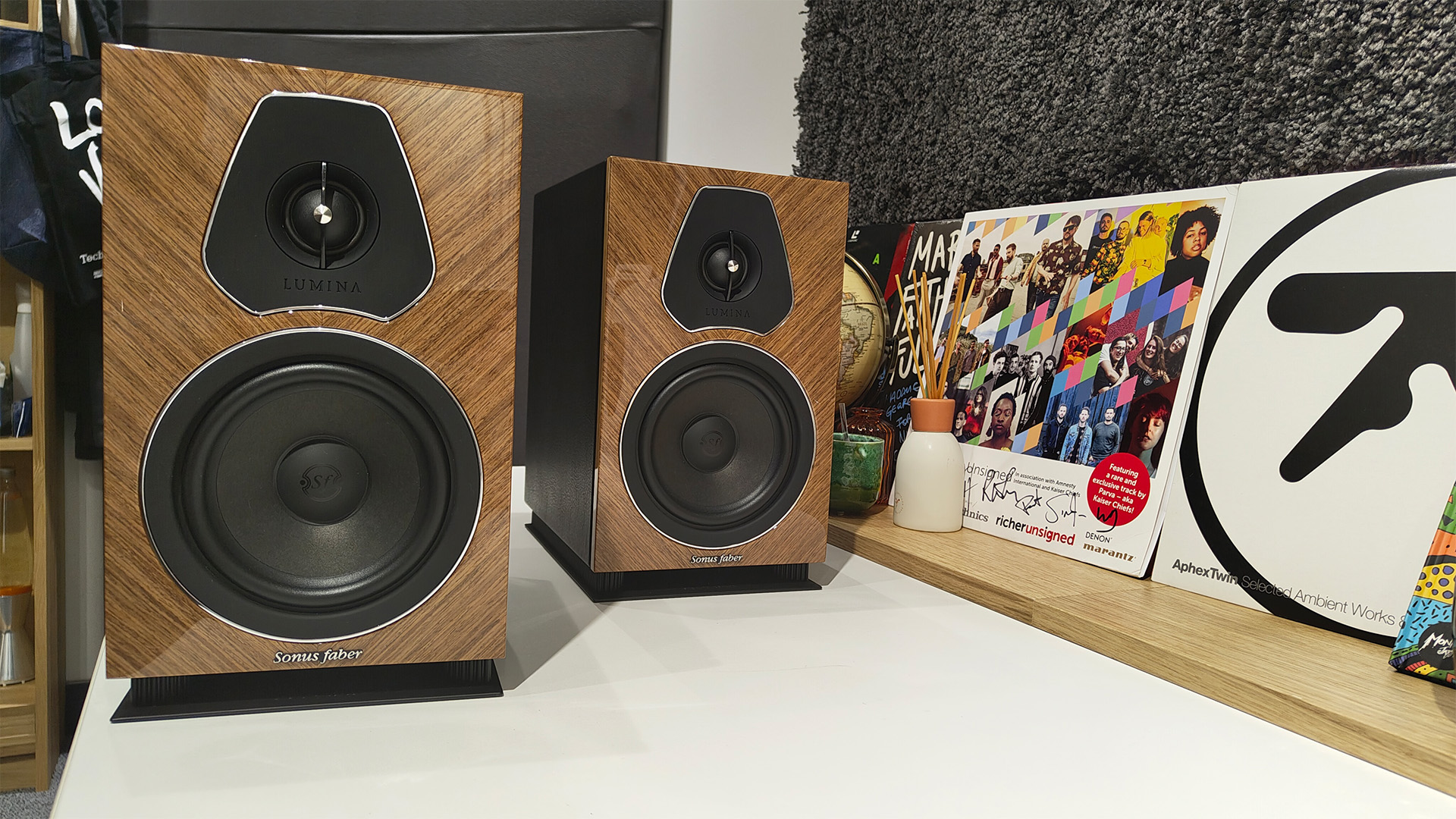
The Sonus Faber Lumina II Amator are a classic four-star product. There are areas in which we feel they could improve, but they offer enough sonic quality and likeability to forge a unique personality that will really resonate with certain listeners. Their slight rhythmic limitations mean that they won’t be ideal for peppier musical styles, but listeners craving a smooth, undemanding listen will find a great deal to enjoy.
SCORES
- Sound 4
- Build 5
- Compatibility 5
MORE:
Read our review of the PMC Prodigy 1
Also consider the KEF LS50 Meta
Best bookshelf speakers: top standmounts for every budget tested







